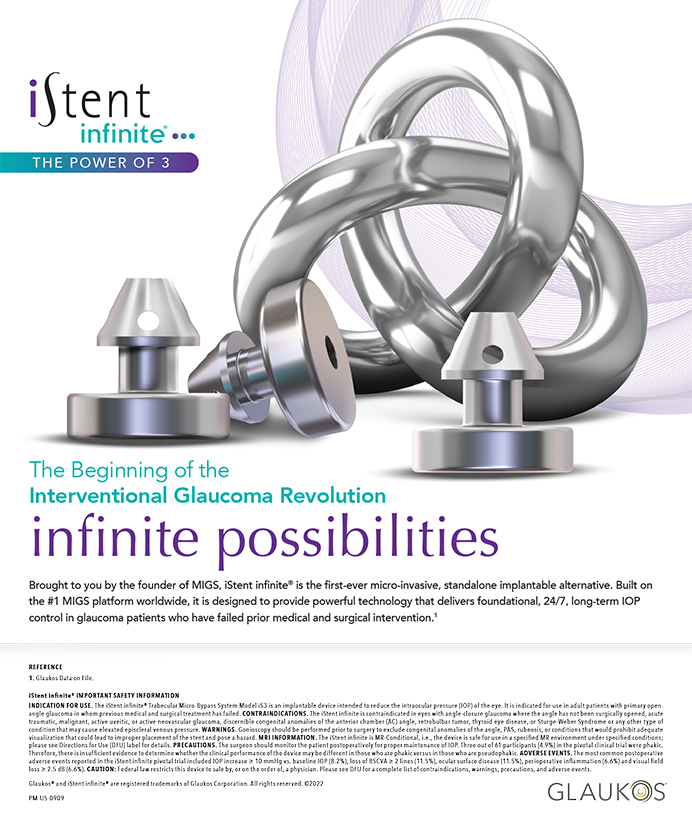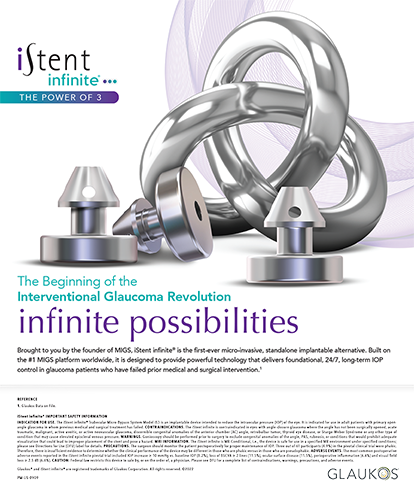Ophthalmic viscosurgical devices (OVDs) have transformed the way that ophthalmologists perform cataract surgery, and more importantly, they make surgery safer for the patient. The enhanced safety is primarily the result of the protection of the delicate corneal endothelial cells and the posterior capsule, which can be damaged by the ultrasound energy and fluid currents during surgery. By shielding the corneal endothelium, OVDs—often referred to as viscoelastics—allow for a faster recovery of sharp vision and nearly eliminate the incidence of pseudophakic bullous keratopathy.
Viscoelastics differ in their rheological properties, which determine the behavior and utility of each OVD (Figure 1). These properties include viscoelasticity, viscosity, pseudoplasticity, and surface tension. Accordingly, OVDs can be divided into two main classes, cohesives and dispersives. Dispersive viscoelastics are useful for coating and protecting the corneal endothelial cells. Although it is possible to create a single viscoelastic that is designed to act as both a cohesive and a dispersive OVD, I find it advantageous to use two separate agents in each surgery, such as the dispersive Healon D and the cohesive Healon GV (both products from Abbott Medical Optics Inc., Santa Ana, CA).
THE IMPORTANCE OF USING A DISPERSIVE OVD
With a lower viscosity than Healon GV, Healon D has the ability to coat intraocular structures and stay in place during the fluidics of phaco surgery. I consider Healon D to be superb for corneal protection, suitable for routine cases as well as challenging ones such as Fuchs' endothelial dystrophy. Although it is possible to make a dispersive from sodium hyaluronate (eg, Healon D) or from chondroitin sulfate (eg, Viscoat [Alcon Laboratories, Inc., Fort Worth, TX]), it is not so much the specific chemical component as the molecular size, weight, and concentration that determine the characteristics of an OVD. Intraoperatively, I find the performance of Healon D and Viscoat to be very similar.
MY SURGICAL EXPERIENCE WITH HEALON D
I find Healon D to be a pleasure to use surgically, particularly when it is a part of the Healon D+GV dual viscoelastic system. After completing a capsulorhexis with Healon GV, I use a large bolus of Healon D to coat the corneal endothelial surface prior to commencing phacoemulsification (Figure 2). In cases of prolonged fluidic flow and phaco time, I can reinject Healon D to ensure continued protection of the corneal endothelium. Due to the agent's retentiveness, the removal of Healon D, like all dispersive OVDs, requires effort at the end of surgery. A high flow rate allows for easier removal, whereas a low flow rate facilitates the OVD's retention. Finally, I find Healon D is excellent for lubricating injector cartridges to aid in the IOL's insertion.
Healon D has superb clarity and a smooth texture, free from bubbles or impurities. I can maintain visualization through Healon D even as the surgery progresses, and the OVD stays in place during even the most challenging cataract cases. Because Healon D is particularly good for partitioning spaces within the eye, it is a great choice after a rupture of the posterior capsule. While maintaining infusion with the phaco probe in the eye, I can inject Healon D via the paracentesis to elevate nuclear pieces, keep vitreous in the posterior segment, and create a barrier.
CHOOSING AN OVD
OVDs have become indispensable tools for cataract surgery and multiple other ophthalmic procedures. With so many different viscoelastics available from the major manufacturers, clearly, no one OVD is perfect under all circumstances. The right choice of OVD depends not only on the ophthalmologist's surgical style, with flow rates producing different viscosities in the OVDs, but also on the multiple physiochemical characteristics of the OVDs. Another factor is the desired effect for each phase of the surgical process.
The ideal OVD depends on the step of surgery. To facilitate the capsulorhexis' creation, the OVD should be cohesive like Healon GV to flatten the anterior capsule yet sufficiently elastic and pseudoplastic to allow freedom of movement within the anterior chamber. To shield the corneal endothelial cells, a dispersive OVD like Healon D tends to be better retained in the chamber and to provide more protective effects than cohesive agents. Dispersive agents also lubricate the injector cartridge well for loading an IOL. A cohesive OVD is a better choice for expanding the capsular bag for the IOL's insertion, however, and these agents are easier to remove at the end of the surgery. With this in mind, I prefer a dual viscoelastic system like Healon D+GV in almost all cases.
Uday Devgan, MD, is in private practice focusing on cataract and refractive surgery in Los Angeles. Dr. Devgan is also an associate clinical professor at the UCLA School of Medicine, and he is the chief of ophthalmology at Olive View UCLA Medical Center. Dr. Devgan is a consultant to, speaker for, and investigator for Abbott Medical Optics Inc. and Bausch & Lomb, Inc., and he is a stockholder in Alcon Laboratories, Inc., and, formerly, Advanced Medical Optics, Inc. He stated that he has no direct financial interest in the products mentioned herein. Dr. Devgan may be reached at (310) 208-3937; devgan@ucla.edu.
Further Reading
- Adina B. The influence of viscoelastic substances on the corneal endothelium during cataract surgery by phacoemulsification. Oftalmologia. 2008;52(1):84-89.
- Arshinoff SA, Wong E. Understanding, retaining, and removing dispersive and pseudodispersive ophthalmic viscosurgical devices. J Cataract Refract Surg. 2003;29(12):2318-2323.


